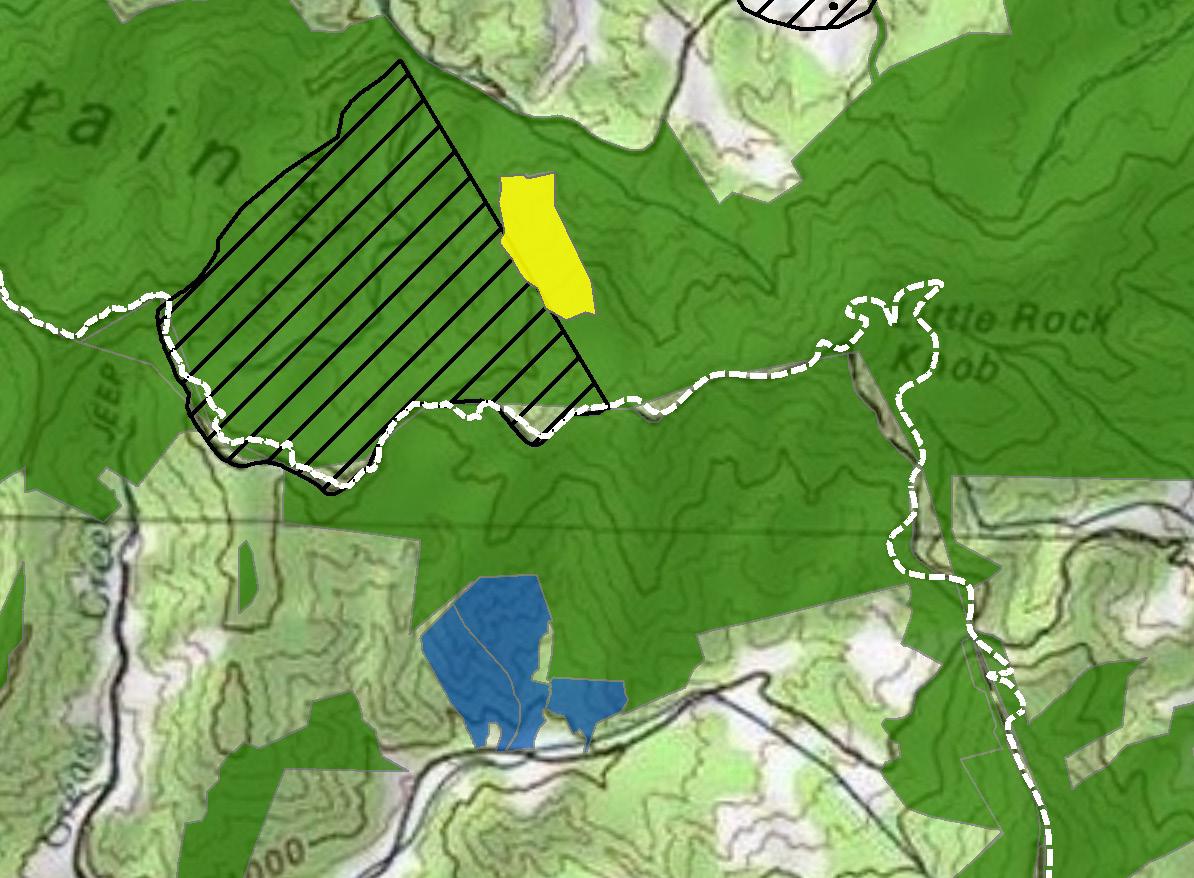
1 minute read
Tiger Creek
SAHC recently purchased 54 acres surrounded by Cherokee National Forest in the Highlands of Roan, within 2,000 feet of the Appalachian Trail.
The Tiger Creek property rises in elevation from 3,400 feet to nearly 4,400 feet, just a short distance from the Clyde Smith Shelter on the Appalachian Trail. This stunning tract features an open field and early successional habitat for songbirds, beautiful tributary stream of Tiger Creek, and large, high elevation rock outcrop. SAHC will own and manage the property to protect habitat and water resources until it can be added to Cherokee National Forest.

The Tiger Creek tract (yellow) is surrounded by national forest land (dark green) just north of the Appalachian Trail (white) and adjoins the Moffett Laurel Botanical Area (black cross-hatching).
“Located on the northern slopes of Iron Mountain, the Tiger Creek property was destined for protection,” says Land Protection Director Michelle Pugliese. “It is surrounded on all sides by the Cherokee National Forest, making it a conservation priority for the US Forest Service (USFS) and eligible for federal funding through the Land and Water Conservation Fund. The special qualities of this property extend beyond the fact that its only neighbor is the USFS. Overlapping its western boundary is the 608-acre Moffett Laurel Botanical Area, which is noted for the presence of rare plant and animal species and high quality natural communities. Those communities include northern hardwood forest, rich montane seeps, and swamp forest-bog complex. With the seepy nature of the Tiger Creek property, it may be home to some of the same rare species.”

The Tiger Creek tract, surrounded by national forest land, contains a variety of natural communities.
The land is located within the Audubon Society’s North Cherokee National Forest & Wildlife Management Area Important Bird Area. The acquisition was made possible by a generous contribution from Brad and Shelli Stanback and a loan that SAHC will repay when we eventually transfer the property to the U. S. Forest Service.









